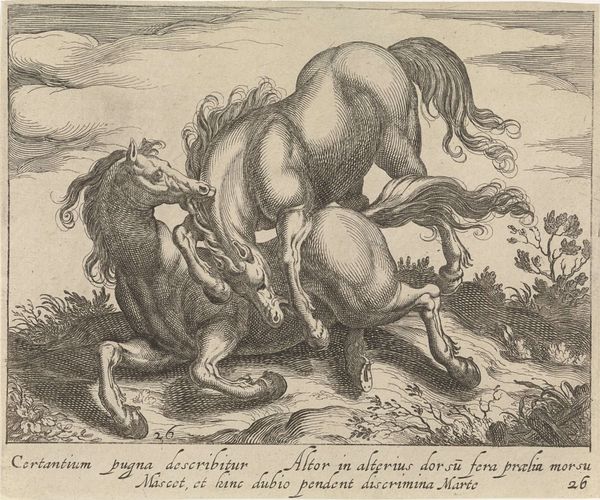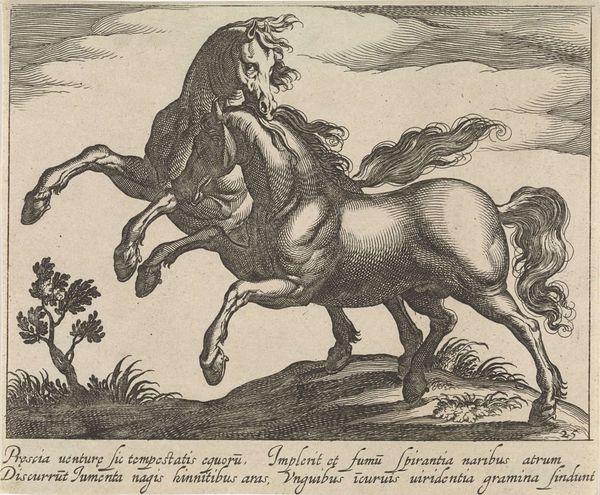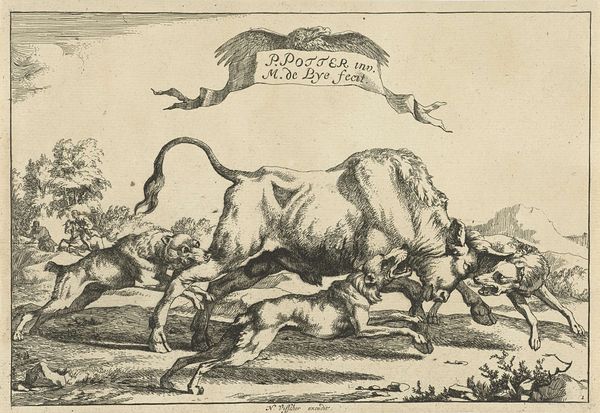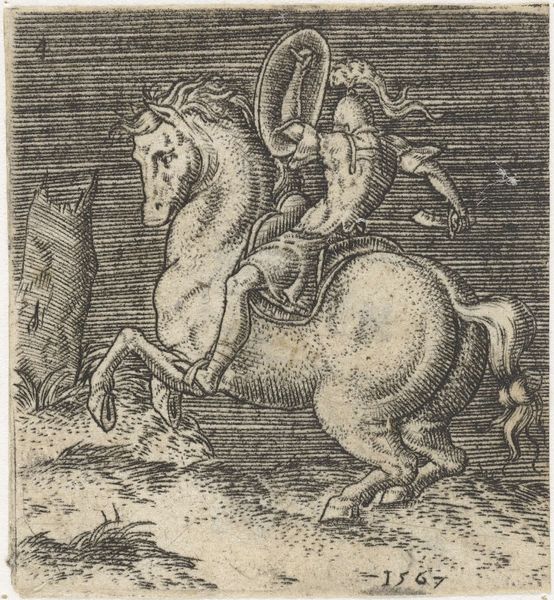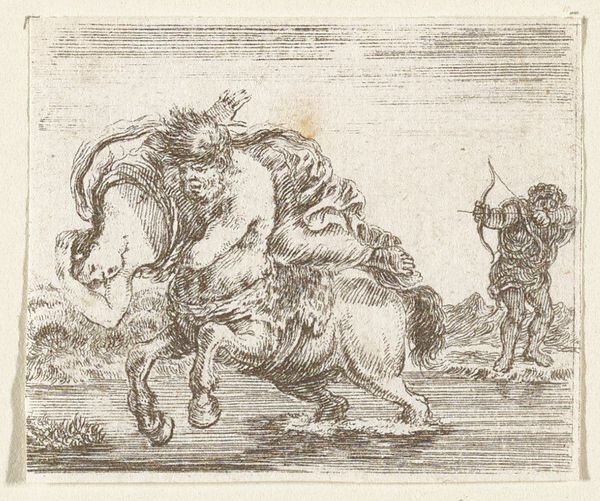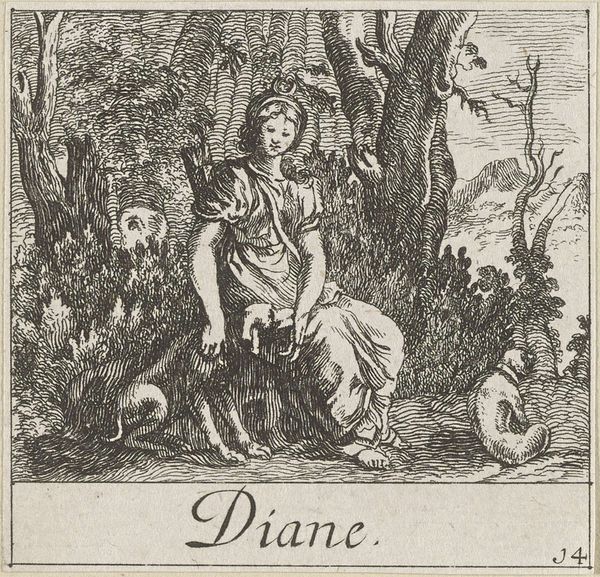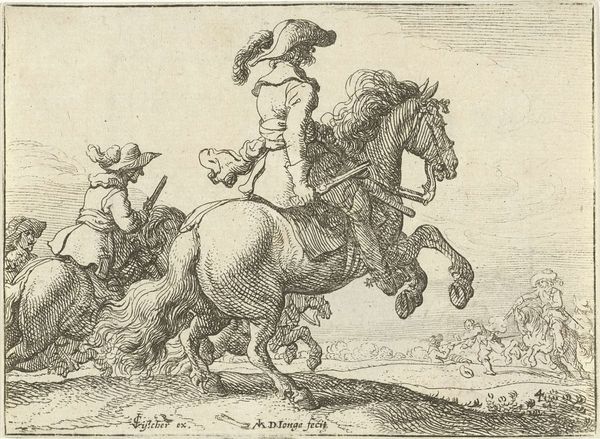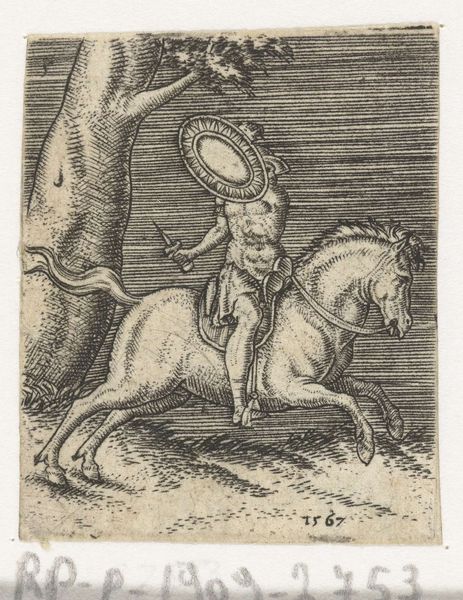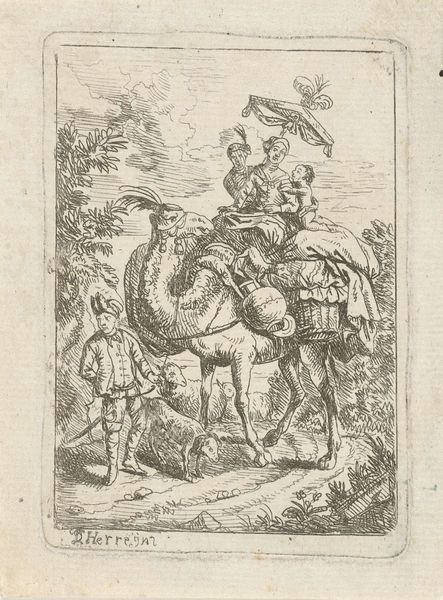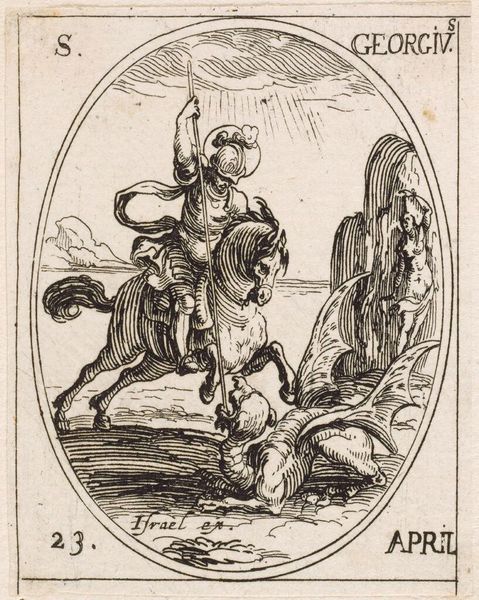
print, engraving
#
baroque
# print
#
landscape
#
figuration
#
history-painting
#
engraving
Dimensions: height 55 mm, width 57 mm
Copyright: Rijks Museum: Open Domain
Editor: Here we have "Hercules en Deïanira," a print dating somewhere between 1620 and 1664, currently residing in the Rijksmuseum. The anonymous artist rendered this scene with such fine lines in the engraving, but its chaotic. It's hard to tell who is doing what to whom! What's your take? Curator: Indeed. Let’s look at the structure of the work. The central figures—Hercules and Deïanira on the centaur—create a dynamic, almost unstable mass, contrasted by the more static archer on the right. Consider the composition, a kind of triangle pointing downwards to draw attention to the title inscription. Editor: The centaur seems to be moving quickly, with the archer taking aim at him. Hercules also seems to be fending someone off... but it's very hard to make out. Curator: Note the use of line. See how the varying densities create different values to model form? And how they move rhythmically to convey energy, the centaur’s forceful movement. But this also contributes to the engraving's spatial ambiguity, which obscures depth. How does this effect alter the balance of power, the scene, and how we, as viewers, interpret its meaning? Editor: Good question! It kind of muddies the storyline. Without the title, one might struggle to understand exactly what’s going on in the narrative. Curator: Precisely. This focus on linear execution emphasizes form over clarity. The overall patterning establishes visual drama through compositional complexity and tonal contrast above clarity in the representation of these bodies in motion. We must focus not only on "what" we see, but also "how" the formal strategies guide our visual understanding. Editor: So, appreciating how the lines and composition affect our interpretation becomes more crucial than just the mythological context? Curator: Exactly! It’s about recognizing how the artist manipulates these intrinsic qualities to convey drama and direct our gaze. I'll remember to examine the forms and shapes beyond the story they convey next time! Thanks for pointing that out!
Comments
No comments
Be the first to comment and join the conversation on the ultimate creative platform.
